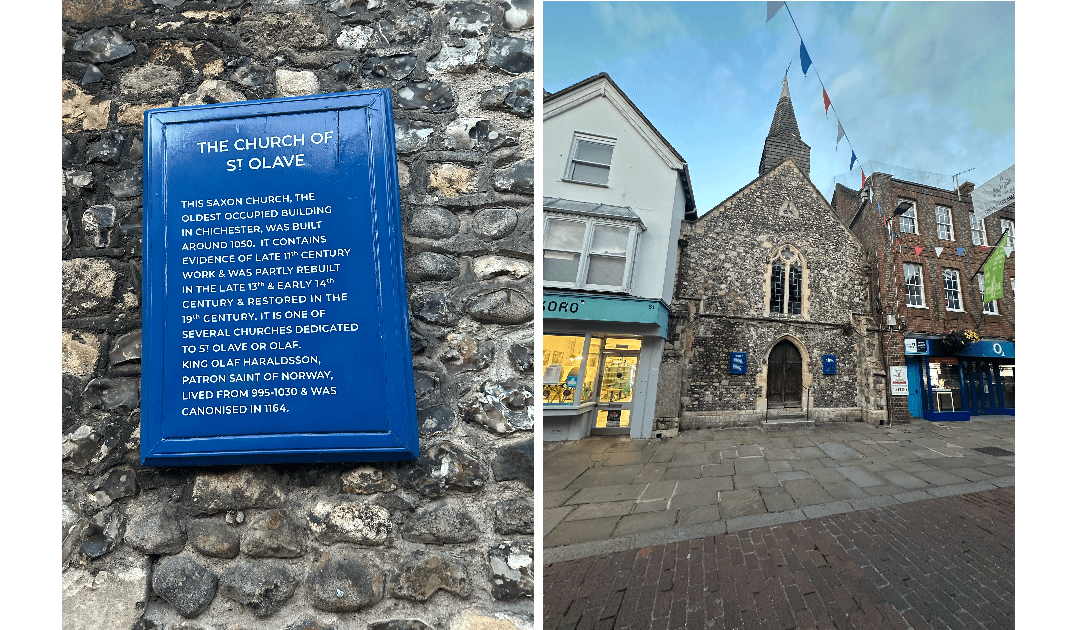During a wonderful weekend with our friends Angie and Frank, we dined in Chichester. The oldest building in Chichester is the Saxon church of Saint Olave, built in 1050. My immediate thoughts were of what those who built the church and worshipped there were soon to confront. The Norman invasion and the Battle of Hastings, a little over sixty miles to the east.
Saint Olave, or Olaf, was the half-brother of Harald Hadrada, the Norwegian king who had led the Viking invasion of 1066, and that King Harold defeated at the Battle of Stamford Bridge. I have written a short review of Senlac: Book Two, by Julian de la Motte. It is a fabulous book. The biggest thing that I took from it is the lesson in logistics. King Harold ignored the advice of his mother, and others, to wait for reinforcements before racing to Hastings for the battle with William. He was driven to haste by the fact that William had landed on his ancestral lands and his men were raping and pillaging his people.
If Harold had met William with men rested and reinforced after the savage battle at Stamford Bridge, who knows what the outcome might have been? Whilst the Battle of Hastings marked the end of the Saxon era, the Battle of Stamford Bridge marked the end of the Viking era.
I don’t think I’ve visited Hastings since I was a child. I remember clearly visiting Battle Abbey, but don’t remember Senlac, although I’m sure we must have been there. Perhaps another visit is necessary. We can also look around Hastings for places familiar from Foyle’s War.

